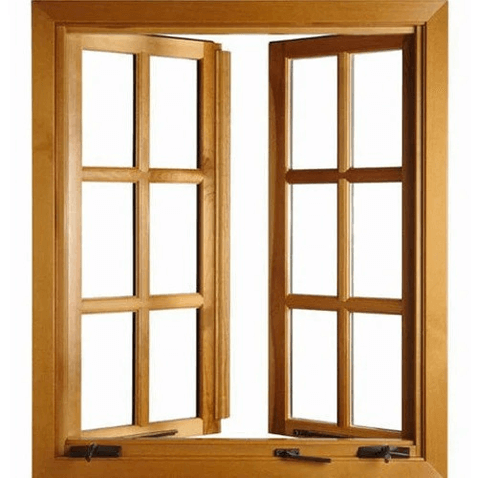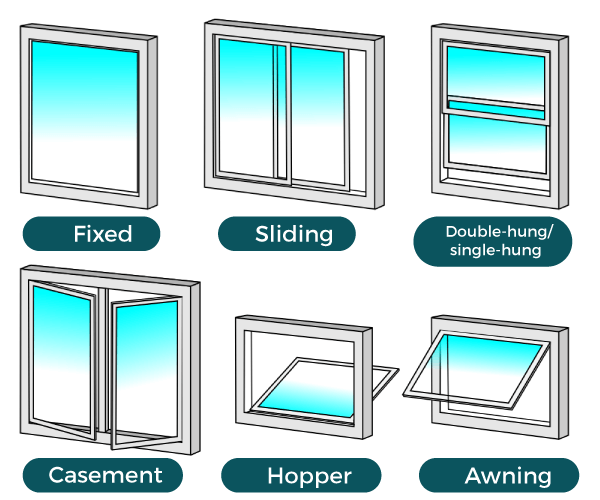Window DefinitionA window is an aperture in a wall or roof of a structure that lets in natural light, air, and occasionally sound. It can be in a variety of shapes and sizes and be built from a variety of materials, such as glass, wood, metal, or plastic. The main purpose of a window is to let natural light and air into a building's interior. It also offers protection from the elements, noise, and intruders, as well as a view of the outside world, boosting a building's visual appeal, and serving other uses. Depending on its intended usage and the architectural style of the structure, windows come in a wide variety of shapes and sizes. 
History of WindowThe intriguing trip of the window's history spans centuries and includes a vast variety of architectural styles, materials, and construction methods. Windows have played a crucial part in the development of architecture and the way we experience the built environment, from their humble beginnings as little apertures in walls to the opulent windows of today's modern skyscrapers. In order to admit light and fresh air into houses, the earliest windows were just tiny apertures in the walls. To keep out the weather, these apertures were frequently covered with animal hides, cloth, or other uncomplicated materials. With time, these openings developed into more intricate designs that included glass, frames, and other materials to produce windows that were both practical and aesthetically pleasing. An early instance of a window with glass panes was discovered in Pompeii, a city that was completely destroyed by a volcanic eruption in 79 AD. The glass was produced by blowing it into flat sheets and then cutting it into tiny panes to fit inside a wooden frame. However, because glass was a rare and expensive material, this type of window was not widely used until much later in history. In the Middle Ages, windows were mostly made for practical purposes, like to let in light and air. Stained glass windows from this time period frequently featured religious themes and motifs. To make these windows, coloured glass was cut into a variety of shapes, and the pieces were then attached using lead strips to produce elaborate patterns and motifs. The Renaissance marked the beginning of windows being acknowledged as an essential component of a building's overall architecture. Larger, more intricate windows that were intended to display the magnificence and beauty of a structure were made possible by the development of perspective and the application of symmetry in architecture. The development of windows continued in the 17th and 18th centuries, when numerous structures had big, multi-pane windows with elaborate frames and embellishments. During this time, glass use expanded as a result of technological advancements that made it simpler and more affordable to produce larger sheets of glass. A new period of architectural creativity and the industrial revolution both emerged in the 19th century. The development of taller structures with bigger windows was made possible by the use of new materials like iron and steel to make bigger and more intricate window designs. In addition to revolutionising the industry, the development of plate glass made it possible to produce even larger panes of glass, enabling the construction of wide windows and glass walls. Early in the 20th century, a movement known as modernism emerged, emphasising clear lines, straightforward designs, and a preference for functionality over adornment. This sparked the development of a new generation of window designs, with many buildings incorporating enormous, plain windows that provided the greatest amount of natural light and a link to the outside. Windows continued to advance in the post-war era, with new materials and technology enabling even more avant-garde designs. Windows that were not only aesthetically beautiful but also contributed to lower energy expenses and increased sustainability could be made thanks to the use of insulated glass, low-E coatings, and other energy-efficient technology. With many modern buildings sporting creative and aesthetically attractive window designs, windows continue to play a significant part in architecture. From the streamlined, contemporary windows of skyscrapers to the complex stained glass windows of antique cathedrals, windows continue to be an essential component of our built environment, offering light, air, and a connection to the outside world. Components of WindowThe design and construction of a window vary depending on several factors, including the architectural style of the building, the environmental conditions, and the intended use of the space. The following are the essential components of a window: Frame: The window's exterior portion, known as the frame, holds the glass and other parts in place. It is a crucial component of the window's structural stability and energy efficiency and can be composed of wood, metal, or PVC. Glass: The glass, which is translucent or transparent and allows light to pass through, is the part of the window. Depending on the intended use and desired performance, it can come in a variety of thicknesses and types, including tempered, laminated, or insulated. Sash: The section of the window that holds the glass and allows it to open and close is called the sash. Depending on the style and purpose of the window, it may be fixed or moveable. Hardware: The hardware consists of all the moving parts that make it possible for a window to open and close, including hinges, locks, and handles. It is also very important for the window's safety and security. Weatherstripping: In order to stop air and water infiltration, weatherstripping is a substance that fills the space between the window and the frame. It also helps the window's energy efficiency and noise reduction. Window TypesWindows can be categorized based on their design, function, and location in the building. Here are some of the most common types: 
Window MaterialsThe choice of window materials depends on several factors, including cost, durability, energy efficiency, and aesthetic appeal. Here are some of the most common materials used in Windows:
AdvantagesWindows offer several advantages to buildings and their occupants. Some of the main benefits of Windows are: Natural Light: The building's windows allow natural light to come in, eliminating the need for artificial lighting and fostering a cheerful, inviting ambiance. Additionally, studies have shown that natural light boosts mood, productivity, and general wellbeing. Ventilation: Windows allow fresh air to enter the building, enhancing the quality of the air inside. In addition to increasing the occupants' comfort and health, proper ventilation can assist lower the risk of respiratory infections. Views: Windows offer views of the exterior, tying the structure to its surroundings and fostering a sense of openness and spaciousness. Views can increase a building's aesthetic appeal and raise its market value. Energy Efficiency: A building's energy efficiency is significantly influenced by its windows. Windows that are properly created and placed can lessen the amount of energy used for lighting, heating, and cooling, resulting in cheaper energy costs and a smaller carbon impact. Daylighting: The process of "daylighting" involves illuminating a building's interior with natural light. It can lessen the demand for artificial lighting and improve the residents' quality of life by fostering a more pleasing and cosy environment. Passive Solar Heating: The process of passive solar heating involves using the sun's energy to warm a building's interior. An efficient use of energy can be made of mechanical heating systems by utilising properly designed windows to help capture and distribute solar heat. Noise Reduction: Windows can aid in reducing the amount of outside noise that enters the building, creating a quieter and more comfortable environment for the occupants. In metropolitan settings or close to active roads, this is especially crucial. Safety and Security: Windows can be made to give the building and its occupants safety and security. Features like tempered or laminated glass, strengthened frames, and reliable locks and bolts can be included in this. Disadvantages of WindowWhile windows are essential features of any building, they also have some disadvantages that can affect their overall effectiveness.
Brands Used for WindowsThere are a wide variety of brands that are used in the window industry, ranging from large international corporations to smaller, more specialized companies. Some of the most well-known brands in the industry include Andersen, Pella, Marvin, and Milgard.
Next TopicBlog Definition
|
 For Videos Join Our Youtube Channel: Join Now
For Videos Join Our Youtube Channel: Join Now
Feedback
- Send your Feedback to [email protected]
Help Others, Please Share










